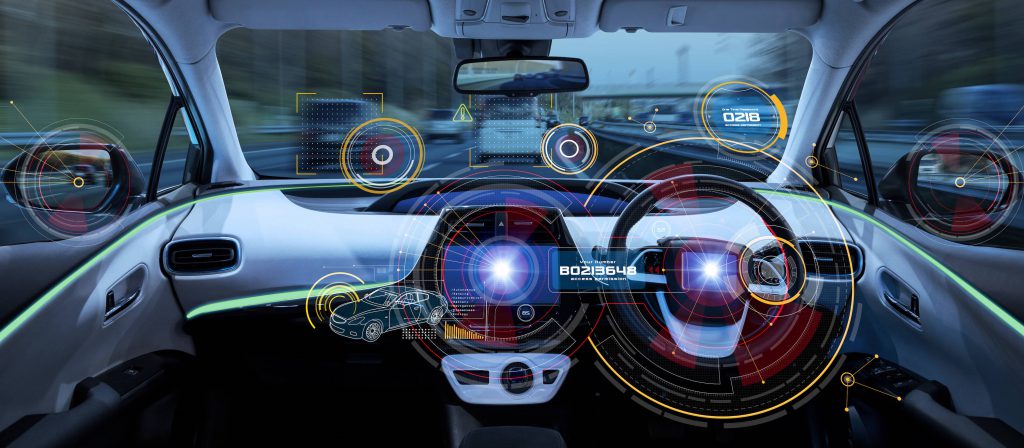 21 September 2018
21 September 2018
Artificial intelligence has quickly turned various sectors upside down; from communication, to healthcare and the mobility sector – let’s talk about that!
How does artificial intelligence influence the mobility sector at the moment, and what can we expect? Read all about it here!
Artificial Intelligence and Machine Learning
At first, it might be a good idea to have a clear understanding of the technology itself. Terms such as AI and machine learning can be quite confusing. So, what exactly is AI? And how does this differ from machine learning?
Artificial intelligence is the concept of machines that can perform tasks that are connected to intelligence. This sounds pretty broad, but it concerns tasks such as planning, understanding language, recognizing and learning sounds. It can therefore be something as simple as a chess computer, to complex, science-fiction-like robots.
Machine learning is, as Arthur Samuel defined in 1959: “the ability to learn without being explicitly programmed.” With machine learning, the algorithm is trained, as it were to teach itself new things. Imagine the possibilities!
Automotive
So, how does AI exactly influence the mobility sector at the moment?
It is expected that in 2025 the automotive AI market will amount to almost $11 billion. IHS Markit even predicted that the amount of new cars having AI-based systems installed, would increase by 109% in 2025.
On AI-based systems will become increasingly important within new vehicles. The categories Infotainment and Advanced Driver Assistance Systems (ADAS) in particular will gain in popularity.
Infotainment is a combination of info and entertainment. In your car, it represents a collection of systems, responsible for the provision of information and entertainment. Think of your music system, navigation and user interfaces. And AI takes this to a higher level, for example with voice command integrations.
ADAS are systems that help the driver improve his driving behavior and safety. ADAS includes systems such as a dead-angle monitor, cruise control, parking sensors and the well-known Tesla Autopilot.
People analytics
In addition to self-driving technology, there are also other AI applications which work within your car. People analytics is one of them; this is monitoring of the driver’s behavior to make the ride safer and more comfortable. By monitoring the body, and using facial recognition, eye-tracking and language processing, the system can have a major impact on your safety and comfort.
Your car will soon be able to tell you if you are too sleepy to drive, or when you’ve missed important signs on the road or in your blind spot. It will also be able unlock the door for you, based on facial recognition. Sounds great, right?
Self-driving cars
The self-driving car is a dream for many; a futuristic vision that is coming true. And it’s not just the major car companies like Tesla and Mercedes who are are busy developing the technology. Google’s sister company Waymo, Uber, Lyft and Apple are also focusing on self-driving vehicles. But why?
The technology promises to have a big, positive impact on society. Self-driving cars will reduce the amount of traffic jams and the number of road accidents.The technology’s ‘driving behavior’ also will lower average emissions. In combination with electric driving, the mobility sector will become a lot more sustainable than it is now!
The self-driving car also opens up many options regarding car-sharing and ride-sharing and fleet management. According to research by ABI, the number of car sharing users worldwide will reach 650 million in 2030. ‘Mobility as a Service’ is being lifted to a higher level by the emergence of this technology.
What it will look like? The self-driving concept car from Smartis the perfect example.
In the nearby future, the Smart Vision EQ Fortwo will be able to pick up people and drop them at locations the passengers choose themselves. The car picks you up at the set location; you won’t have to go to a pick-up location. By using artificial intelligence, the vehicles will be able to predict where and when a ride is needed! This means that your ride be at your pick-up location at the moment you are finished with work. In addition, there is still something striking about the car: the absence of pedals and a steering wheel.
AI ensures improved safety, speed and comfort within the mobility sector. In combination with car sharing and electric driving, AI is able to create a very sustainable vision for the future, and we are happy about that!
Doubts
It comes as no surprise that self-driving cars raise a lot of questions about safety and responsibility. The Dutch government is on top of the legislation, to ensure that the rules go along with the speed at which the developments take place.
When the driver ‘drives’ the (partially) self-driving car, the driver is fully responsible for anything that could happen. As a driver, you’re able to intervene manually and gain control over the situation yourself. When the system isn’t working the way is should, than the responsibility lies with the producer.
According to the Ministry of Infrastructure and the Environment, human errors account for 90 percent of the accidents that take place Dutch roads. Therefore, the self-driving car will greatly reduce the number of accidents. The technology learns to drive perfectly: every turn that is taken, is processed and optimized. A self-driving car is not distracted, not tired; it just focuses the road.
Tesla’s figures have shown that their Autopilot caused one fatal accident so far; after 209 million kilometers driven. For an average of one fatal accident per 151 million kilometers, the technology seems to be safer. Figures to substantiate this any further, aren’t available yet; the technology hasn’t been on the road long enough.
So, what’s next?
The developments of artificial intelligence are going at light speed. The influence of AI is already noticeable, and will only get bigger the coming years! We are looking forward to the opportunities the technology will offer and the positive influence it will have. Not only on the mobility sector, but also on the environment and society as a whole.
